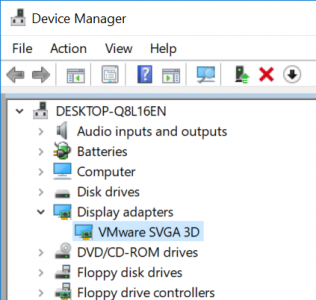Virtualization – Old Hat?
Although humans in general and members of its subspecies “marketing manager” in particular tend to treat currently “hot” topics as new and revolutionary, they only rarely are. In fact, “new” should be considered as in “new wine in old bottles” rather than in “did not exist before”. Take virtualization. Although the topic of the day seems to be cloud computing, virtualization can probably still be called “hot” (especially since a cloud also is a kind of virtualization). But is it new? Judge for yourself: Below I have compiled a list of boring old technologies that employ virtualization.
Virtualization is used in…
- CPUs: Virtual address space / virtual memory – the processor translates between the logical addresses processes use and physical addresses the kernel uses
- Networks: VLANs segregate a physical network into logically separate parts
- Networks: IP (as in TCP/IP) adds a logically entirely different view (IP addresses) to the physical network (based on MAC addresses)
- Networks: DNS de-couples the way we see networks from how they work (names vs. addresses)
- Remote access: RDP and ICA, nowadays called “presentation virtualization”
- Storage: File systems virtualize the blocks on a hard disk
- Storage / networking: DFS spans a virtual namespace that makes the real location of files opaque to the user
- User interfaces: A desktop is an abstraction that translates between how humans perceive reality and the way a computer works
- Programming: Programming languages offer a logically very different view of a computer’s native assembly language







3 Comments
Virtualization is really old hat.
http://en.wikipedia.org/wiki/VM_%28operating_system%29
VM/370 was a reimplementation of CP/CMS, and was made available in 1972 as part of IBM’s “System/370 Advanced Function” announcement (which added virtual memory hardware and operating systems to the System/370 series). Early releases of VM continued in open source, and today are considered to be in the public domain. This policy ended in the mid 80s, when VM became a “For-charge Licensed System Product”.
Helge,
decades ago IBM researchers discovered a property of certain VM configurations, in which the virtual machine outperforms the equivalent physical machine, on the same hardware. This was dubbed the Virtual Machine Performance Anomaly, and is due to software optimizations that are not available to the physical machine, such as caching, out-or-order execution and others.
I’ve never seen any info about this on the www, but the phenomenom was discussed briefly in the book Unauthorized Windows 95.
http://www.amazon.com/Unauthorized-Windows-Developers-Exploring-Foundations/dp/1568841698
Intersting! I had not heard about that phenomenon before.